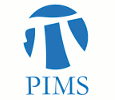2013 CMS Summer Meeting
Dalhousie University, June 4 - 7, 2013
Public Lectures
[PDF]
[PDF]
- ERIK DEMAINE, MIT
Algorithms Meet Art, Puzzles, and Magic [PDF]
-
When I was six years old, my father Martin Demaine and I designed and made
puzzles as the Erik and Dad Puzzle Company, which distributed to toy stores
across Canada. So began our journey into the interactions between algorithms
and the arts (here, puzzle design). More and more, we find that our
mathematical research and artistic projects converge, with the artistic side
inspiring the mathematical side and vice versa. Mathematics itself is an art
form, and through other media such as sculpture, puzzles, and magic, the
beauty of mathematics can be brought to a wider audience. These artistic
endeavors also provide us with deeper insights into the underlying
mathematics, by providing physical realizations of objects under
consideration, by pointing to interesting special cases and directions to
explore, and by suggesting new problems to solve (such as the metapuzzle of
how to solve a puzzle). This talk will give several examples in each
category, from how our first font design led to building transforming robots,
to how studying curved creases in origami led to sculptures at MoMA.
The audience will be expected to participate in some live magic
demonstrations.
- EVA KNOLL, Mount Saint Vincent University
THE HILBERT CURVE: ALGORITHMS, PROCESSES, INFLUENCES, RESULTS [PDF]
-
According to founding members of the Concrete Art movement, its intention is to avoid re-producing nature and, instead, to embody abstract ideas in real, concrete form, in order to make the built environment more bearable. Mathematics is a fount of abstract ideas, some of which are primarily visual.
I have been making mathematically-based art for more than 30 years, and will discuss some of the algorithms and processes that I have used to design and produce artwork based on the Hilbert curve, a fractal that fills a square surface, to any desired density. Along the way, I will also present artwork by some of the artists who have influenced my work. A number of my pieces will be on display in the accompanying exhibit that will be shown at the 2013 CMS Summer Meeting.




